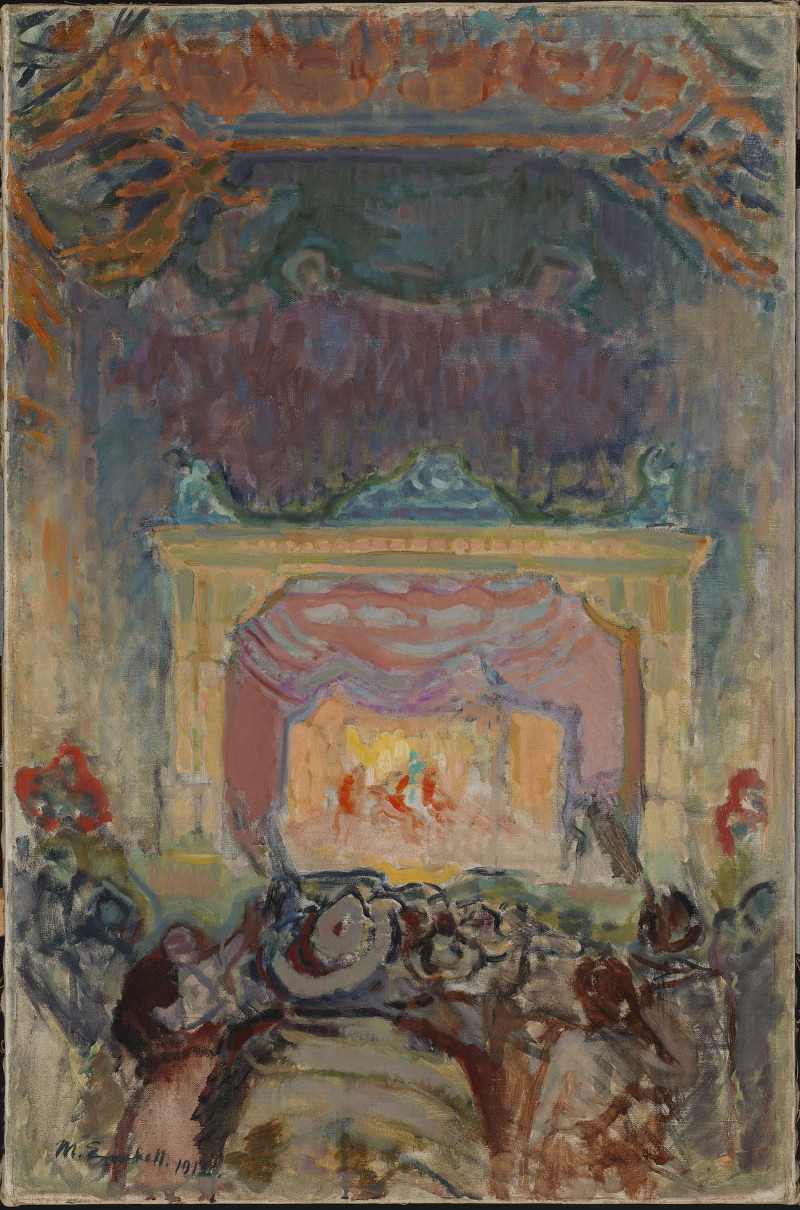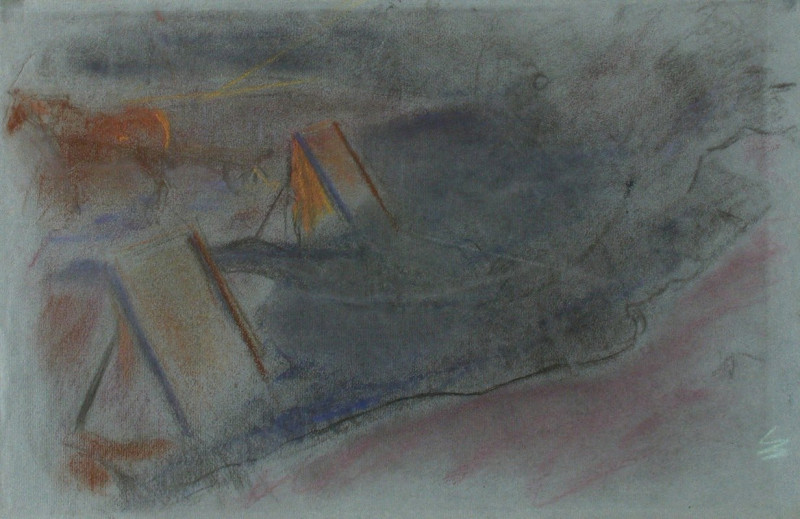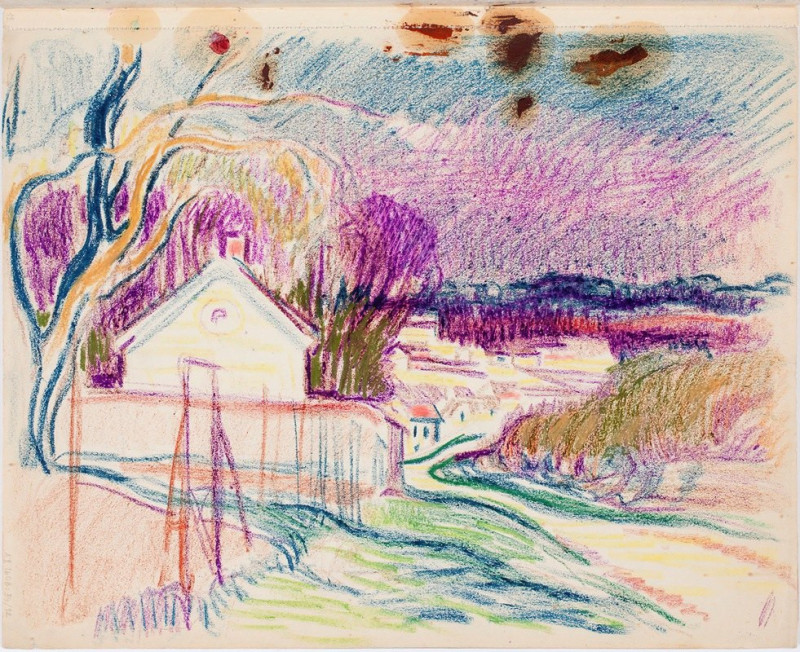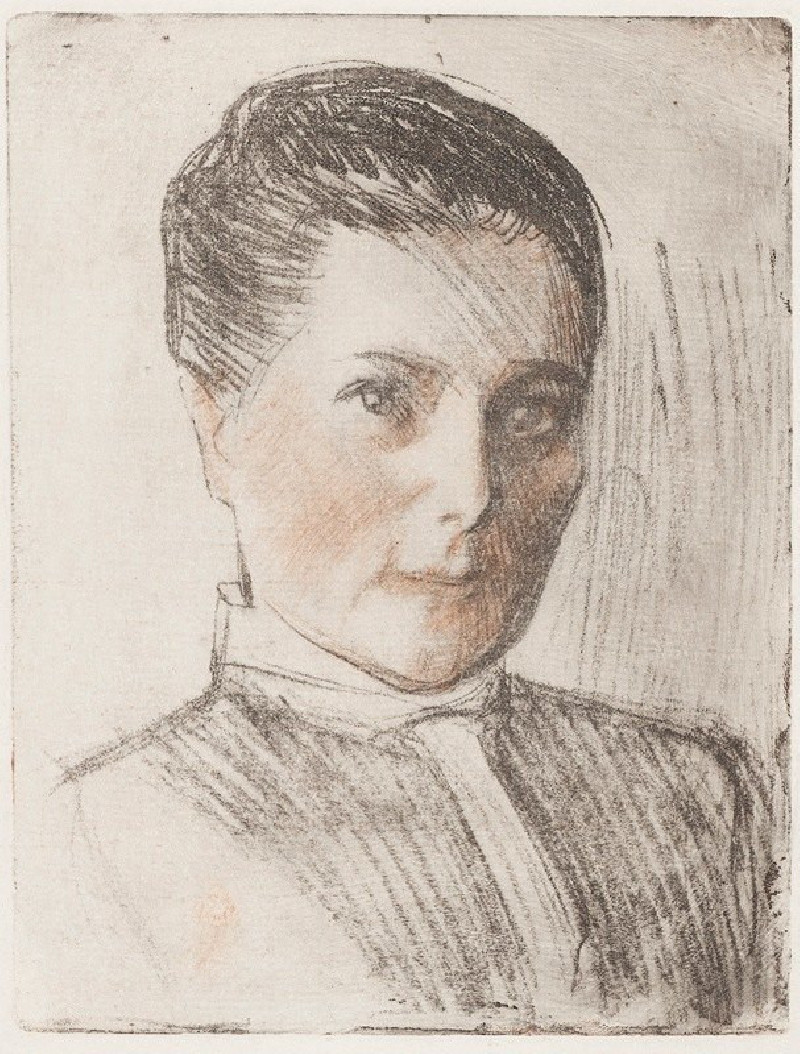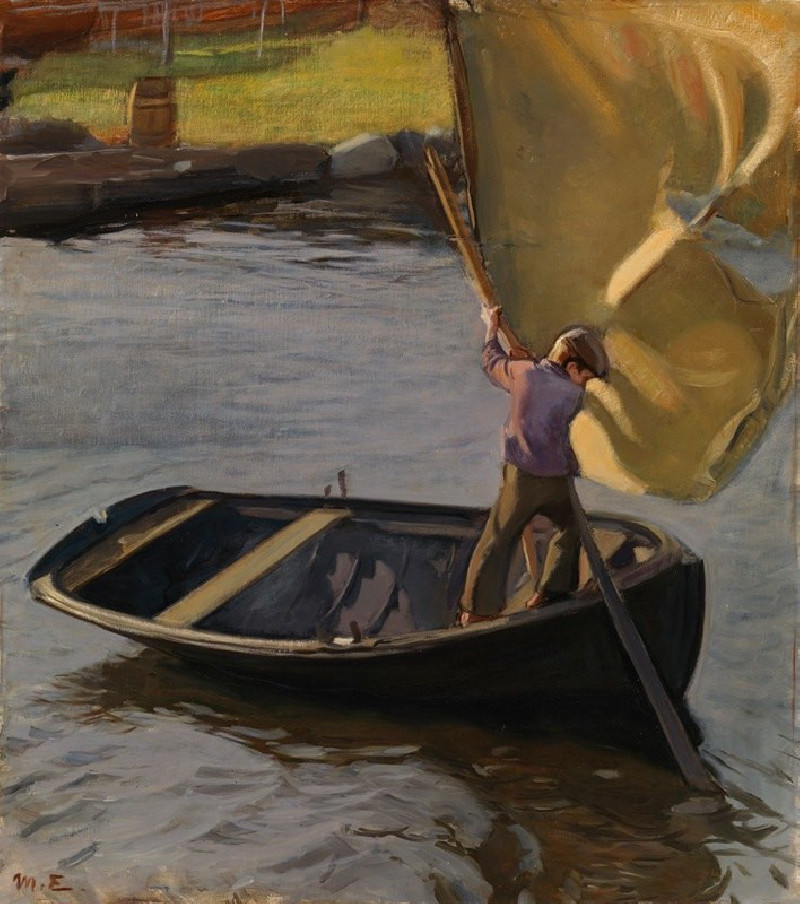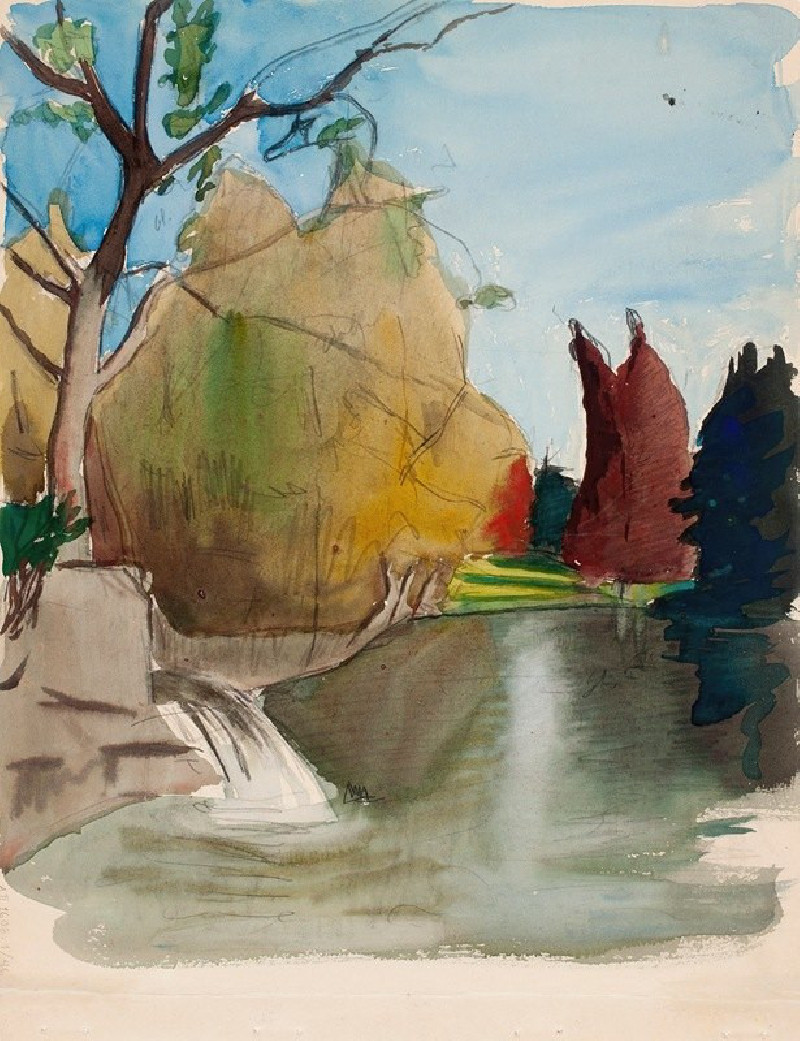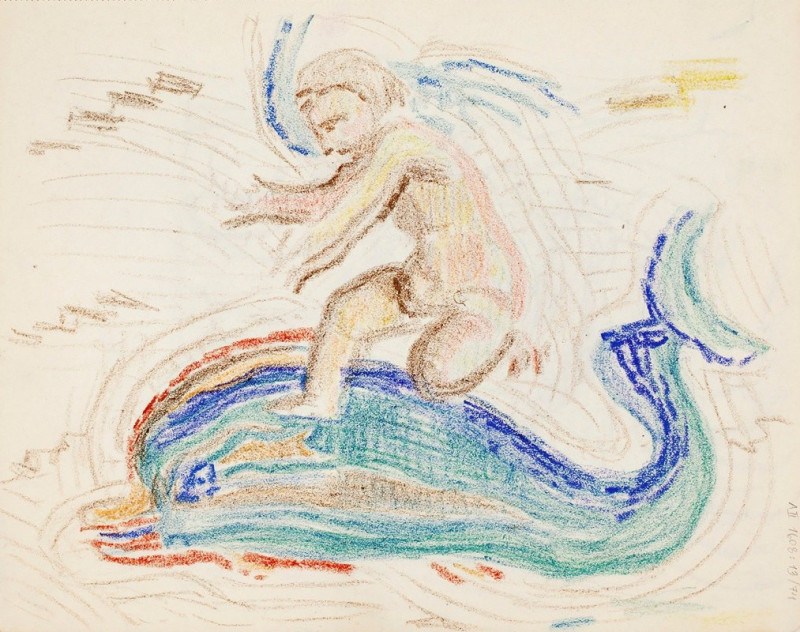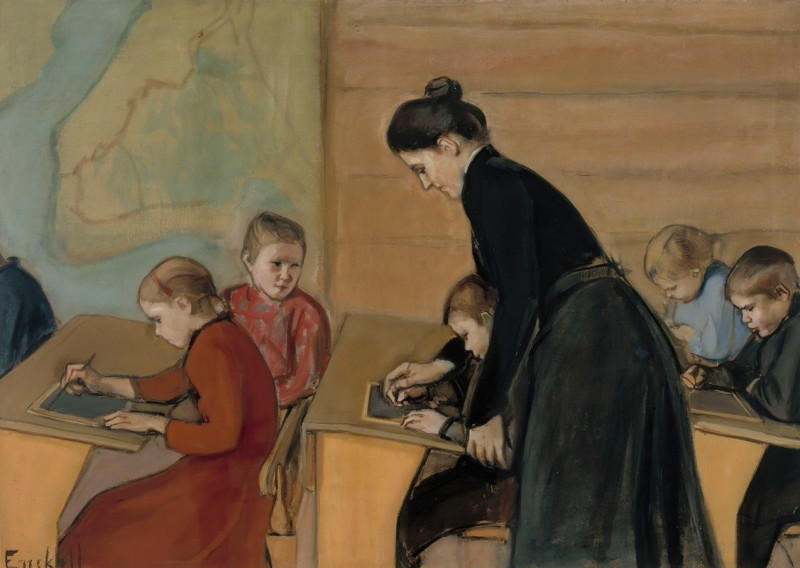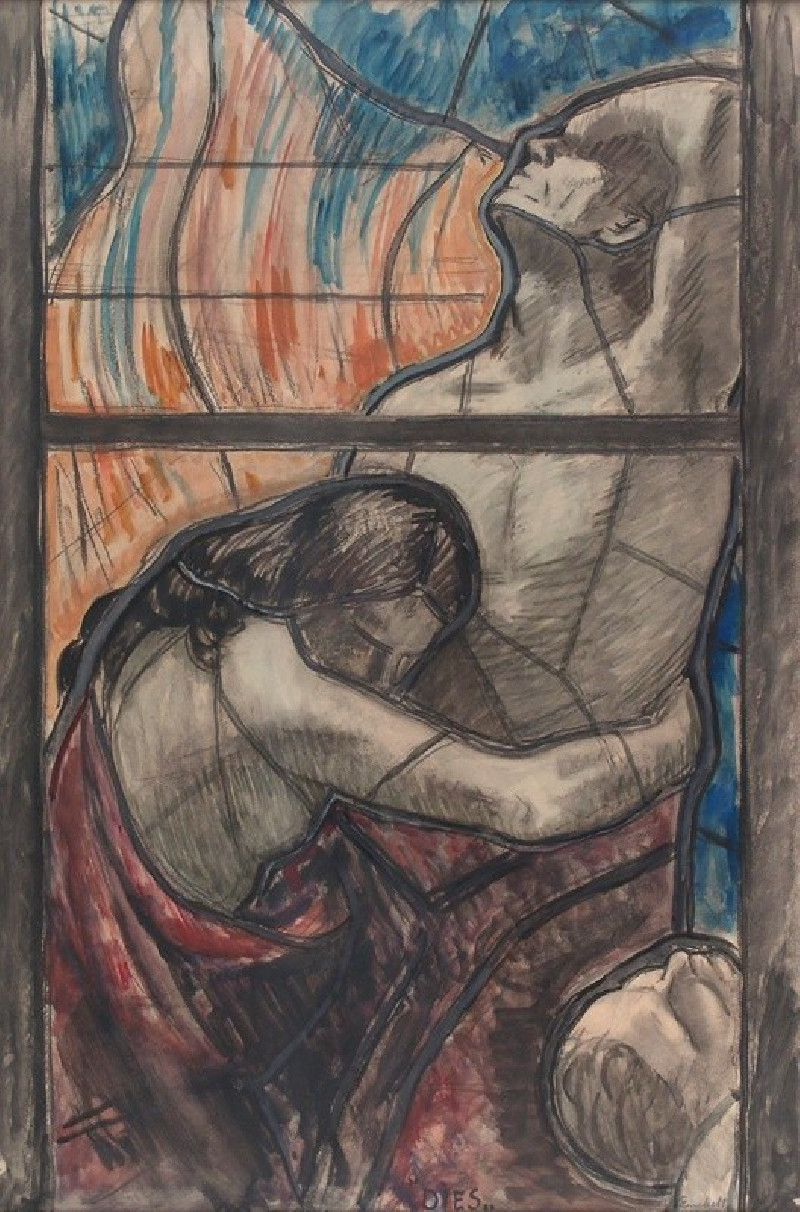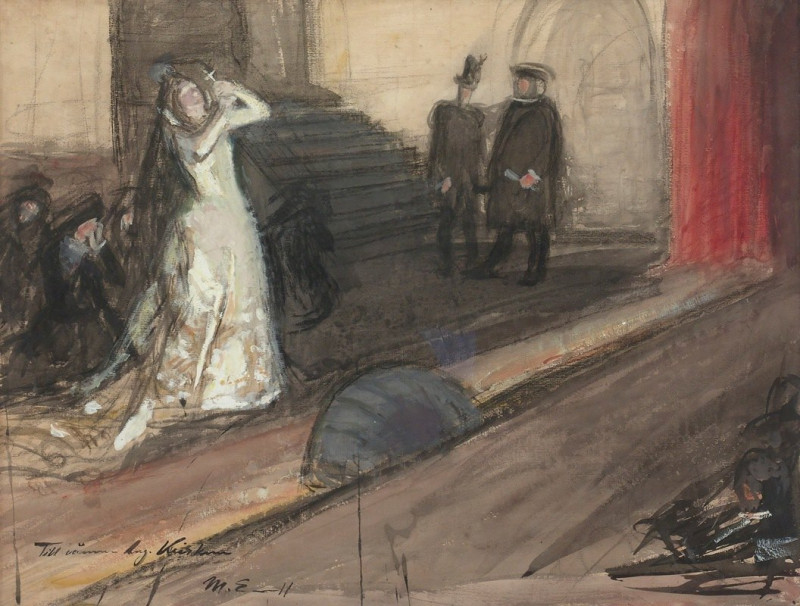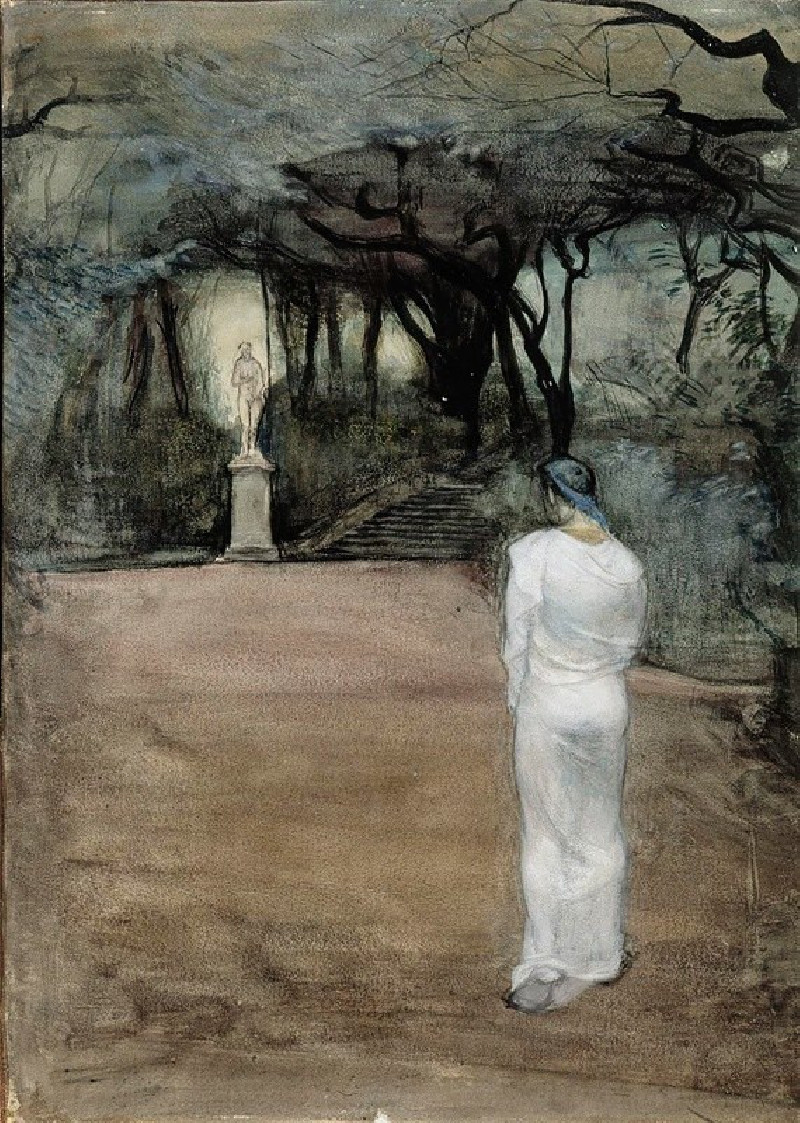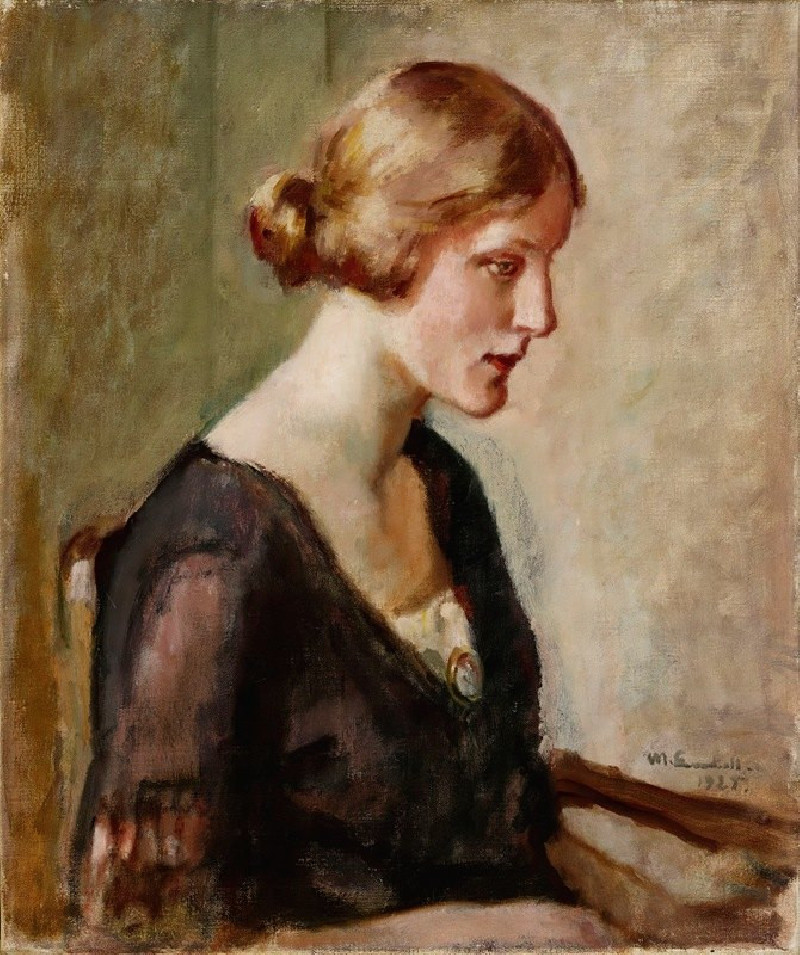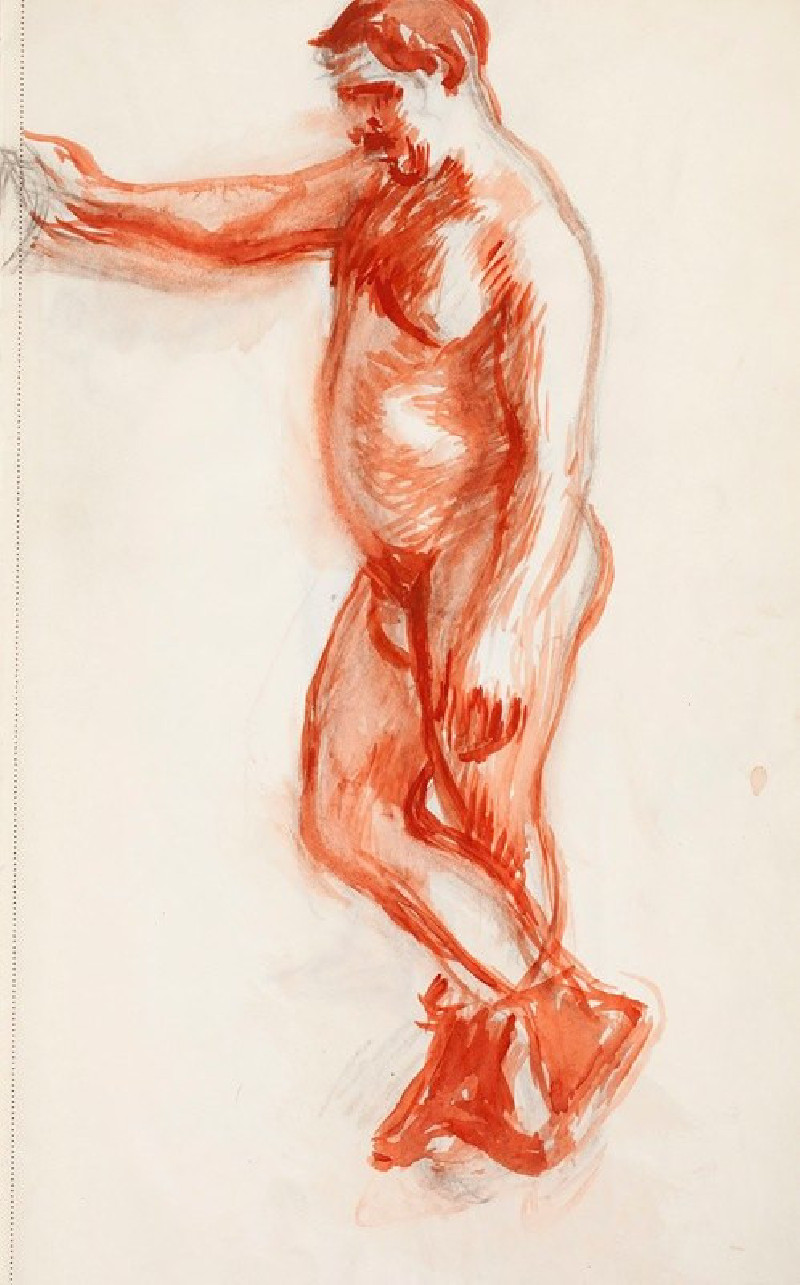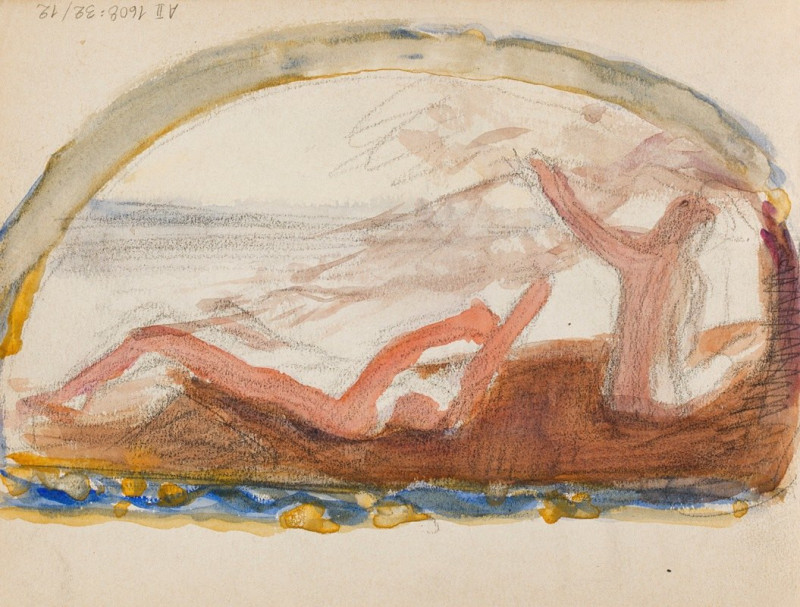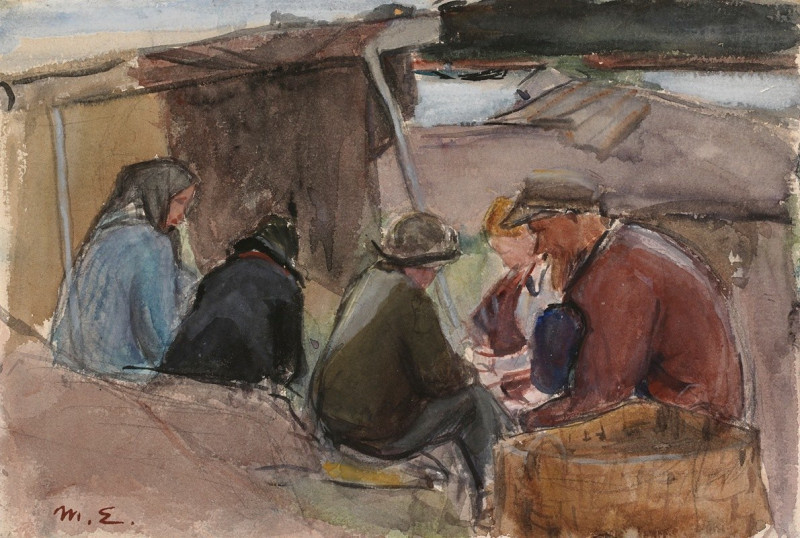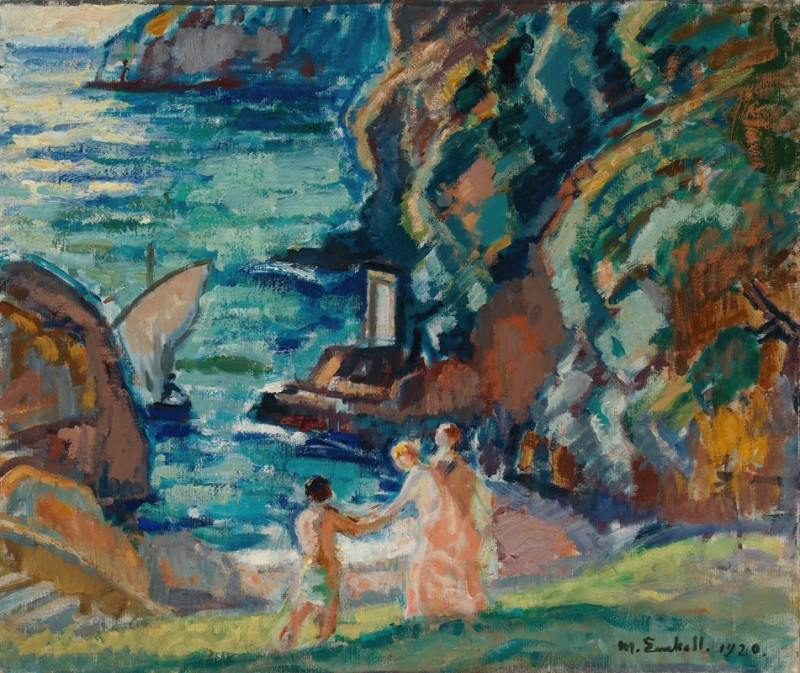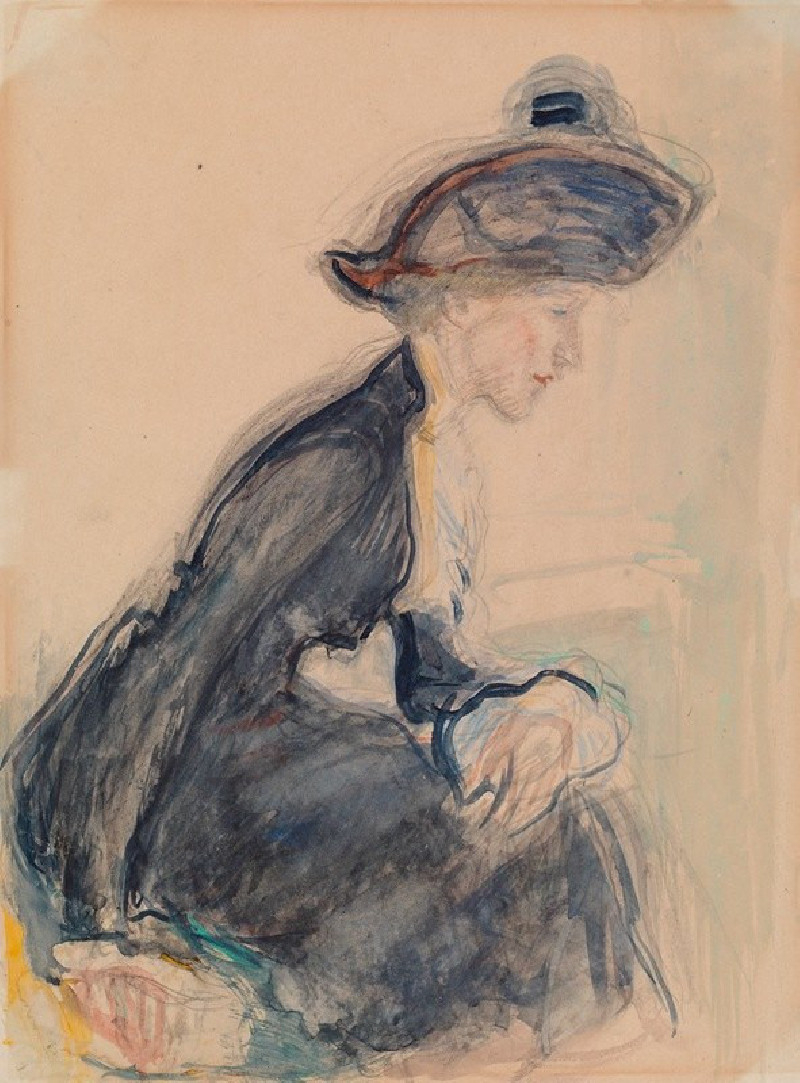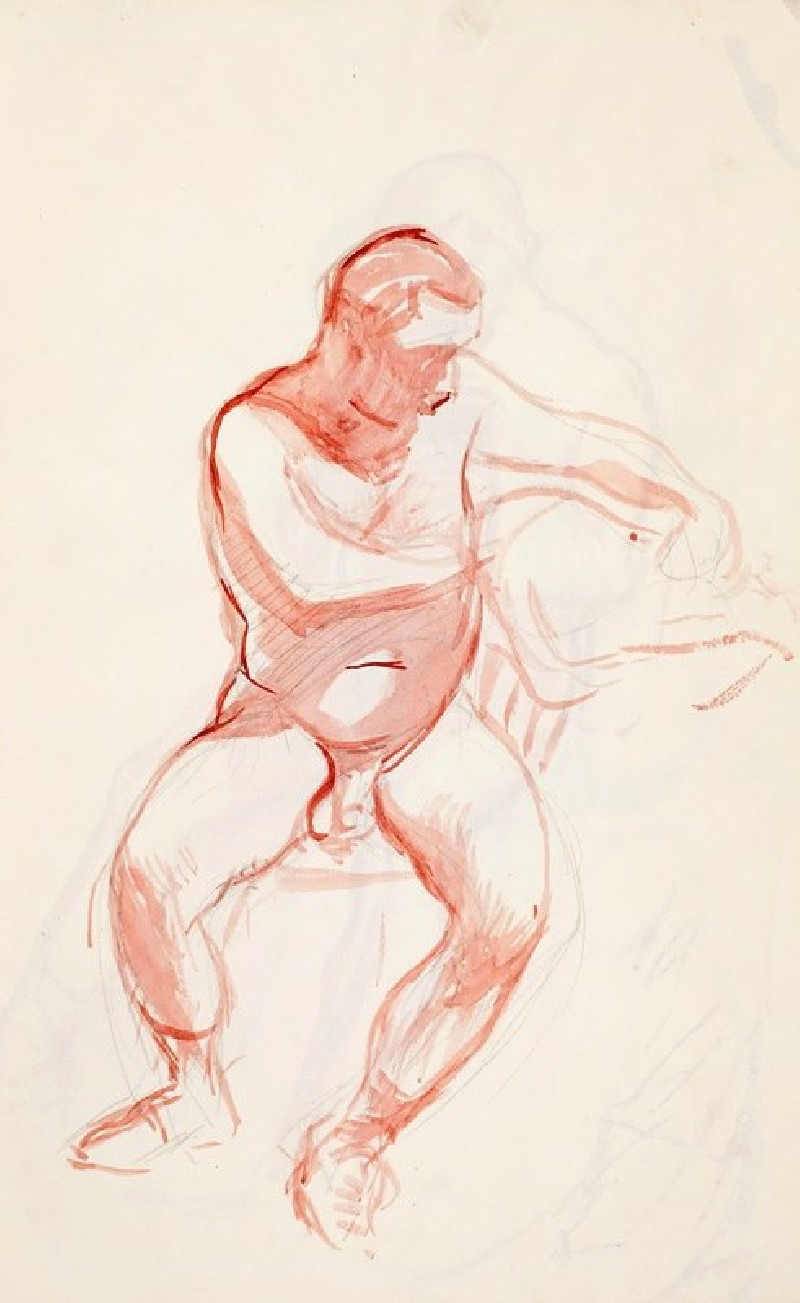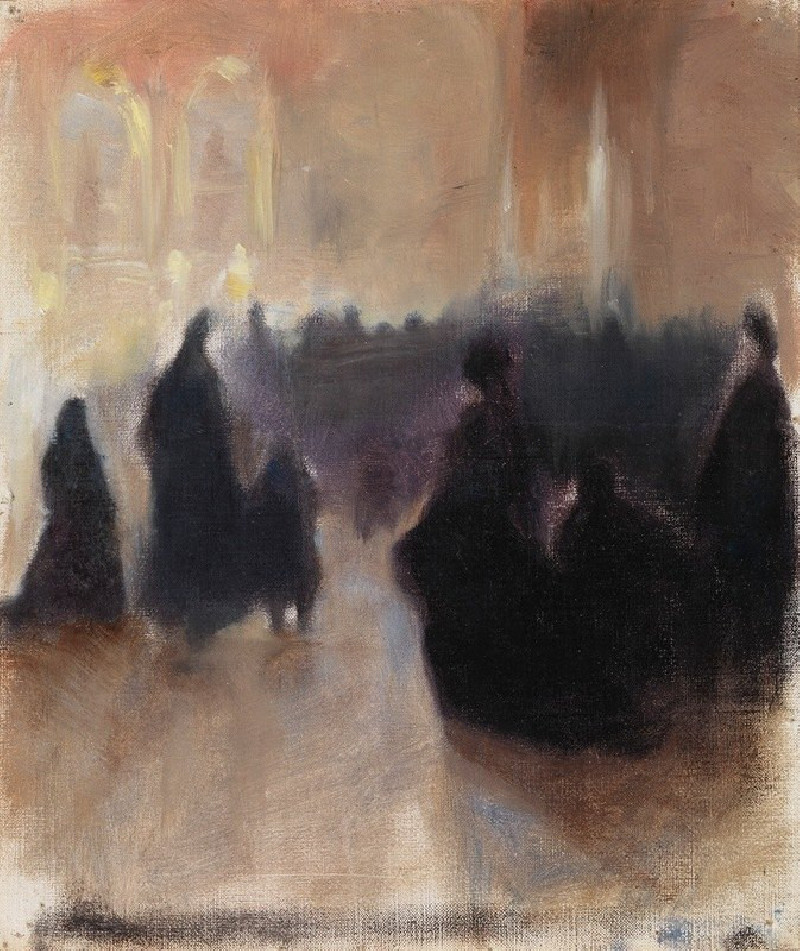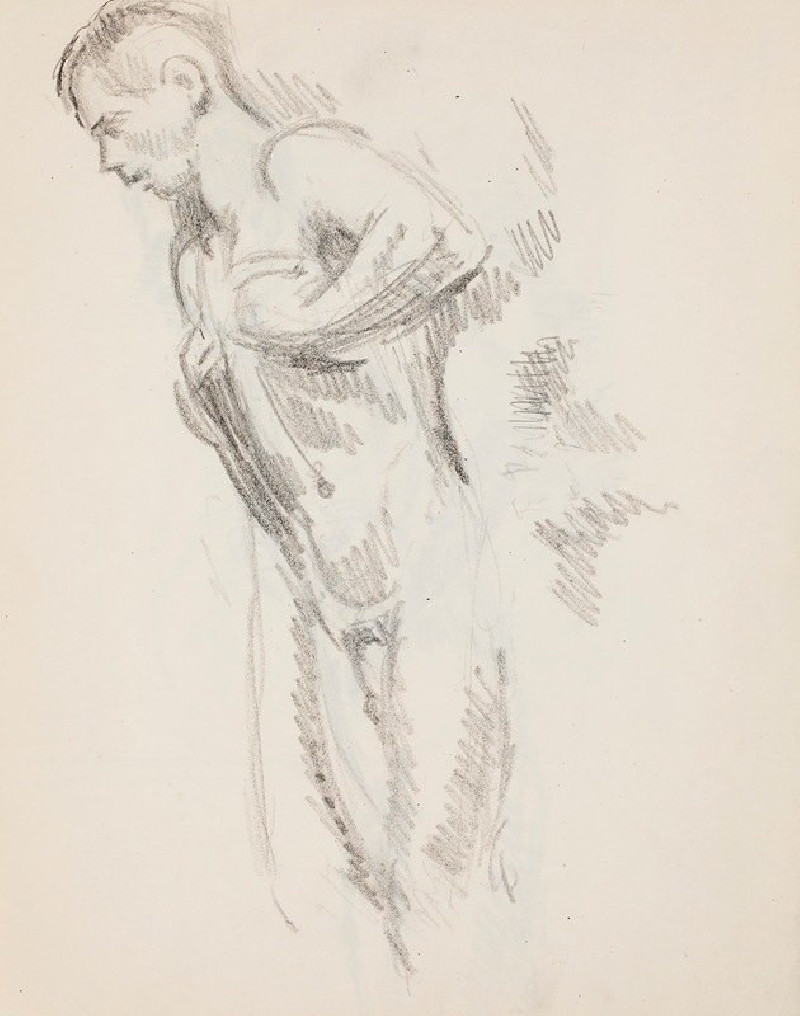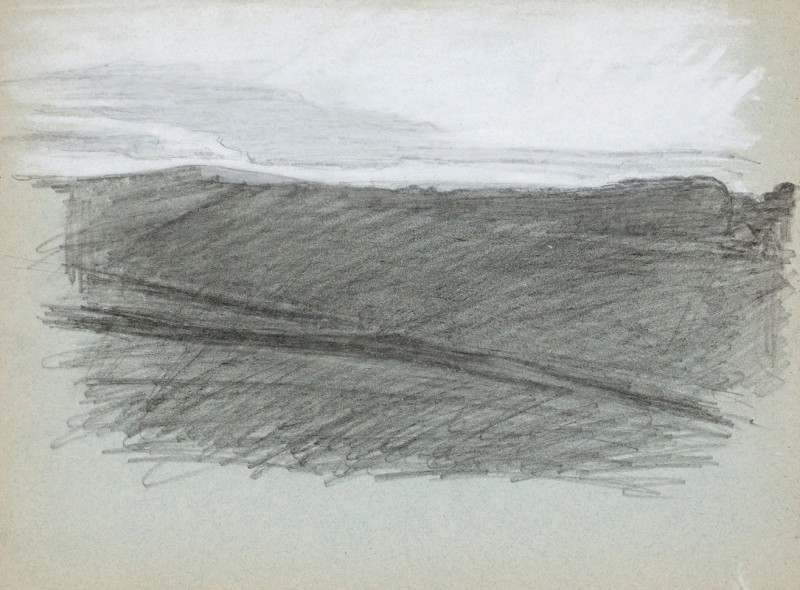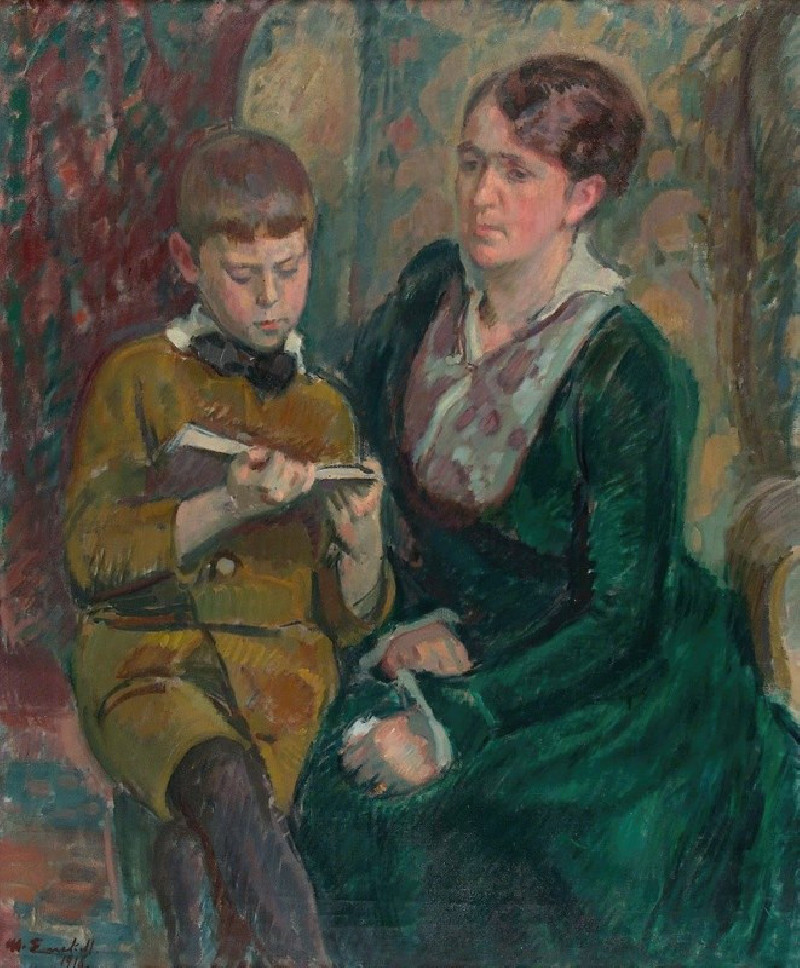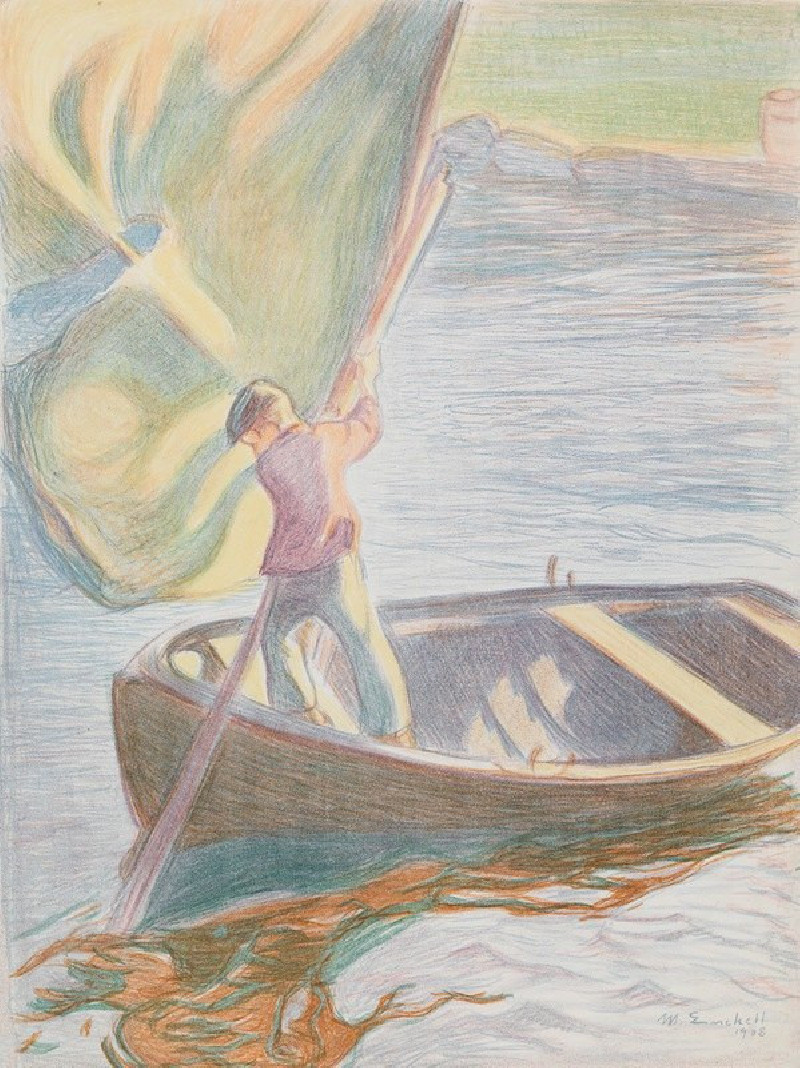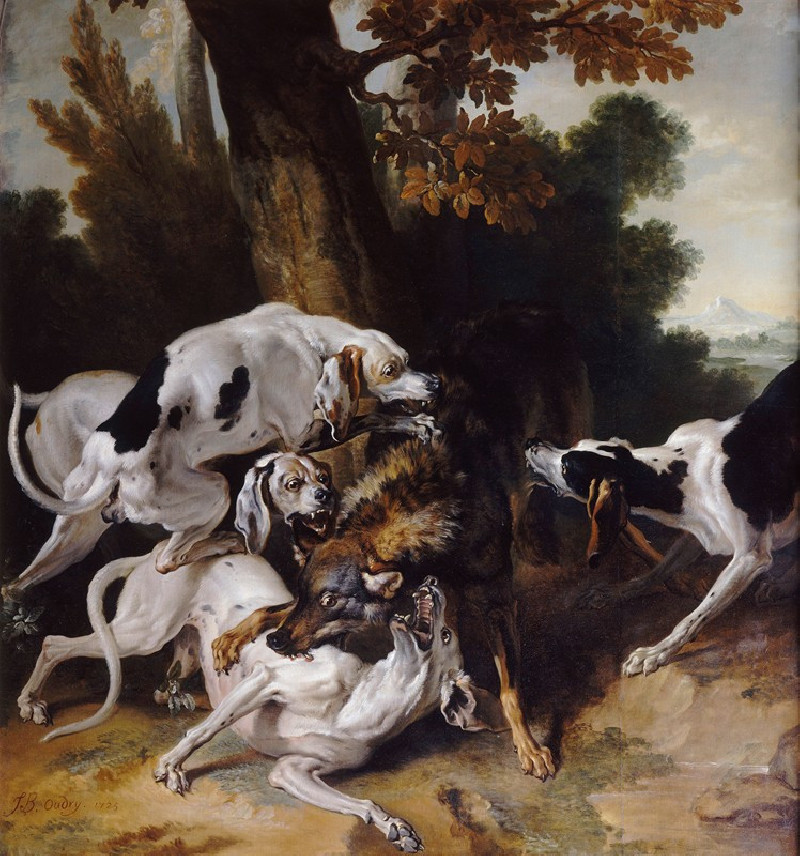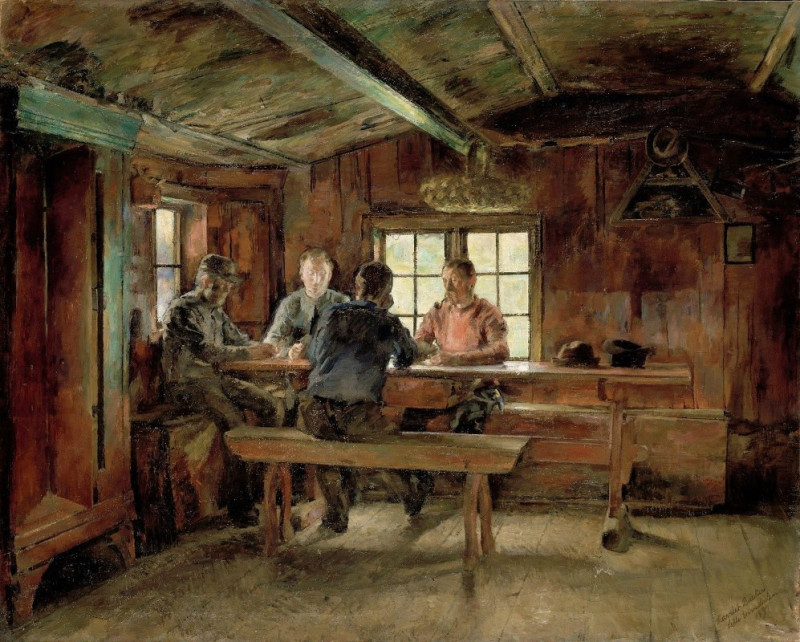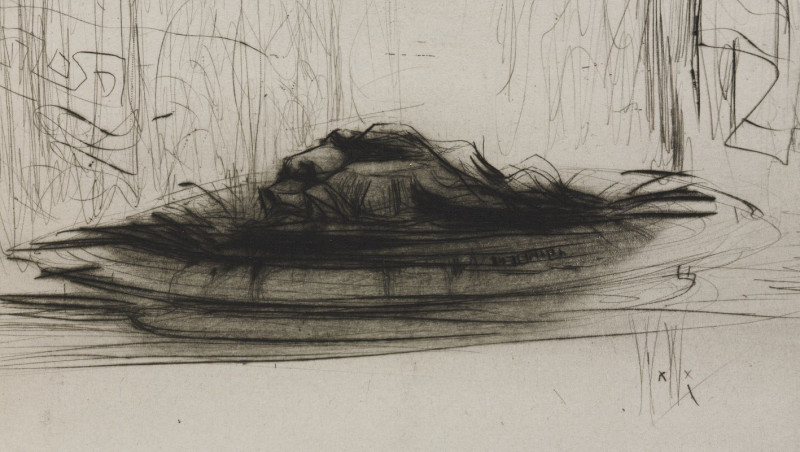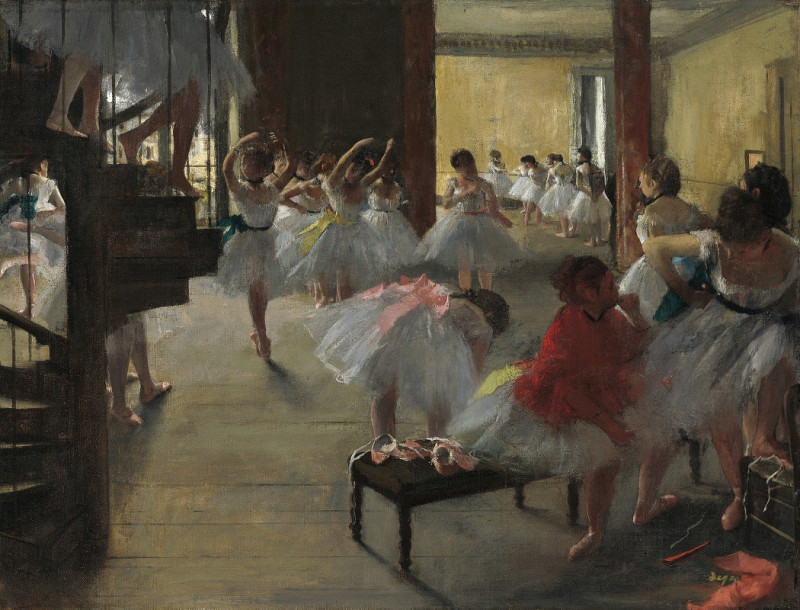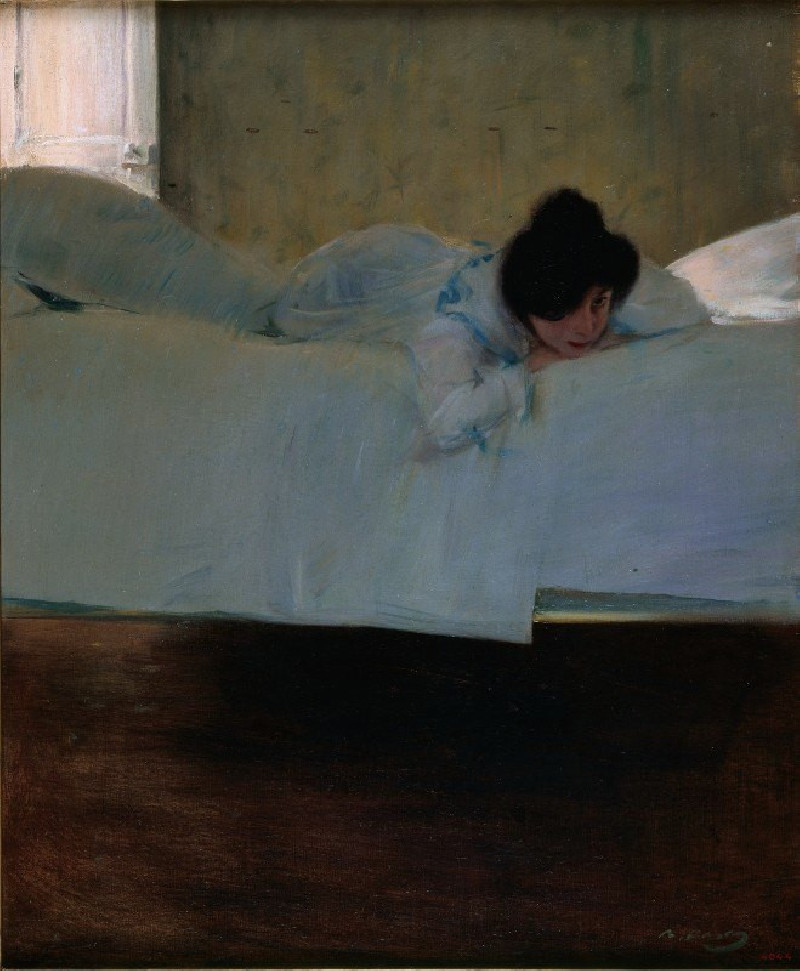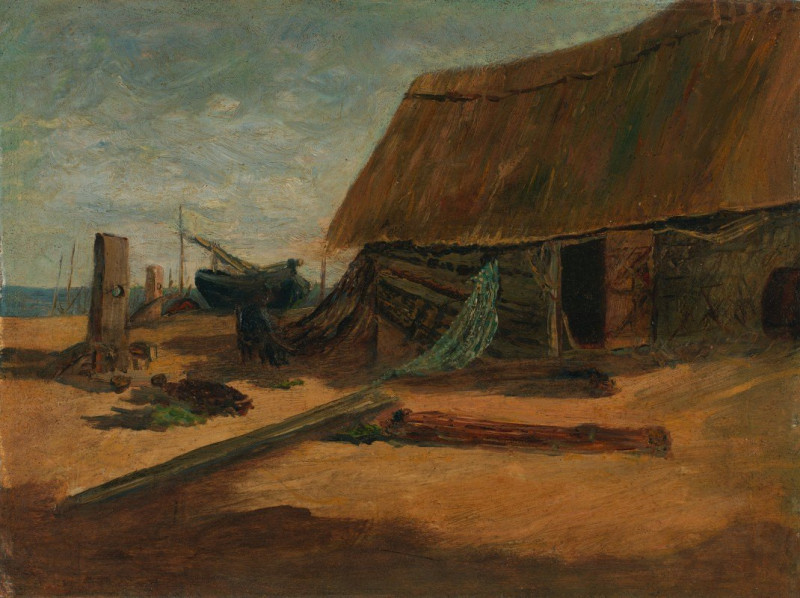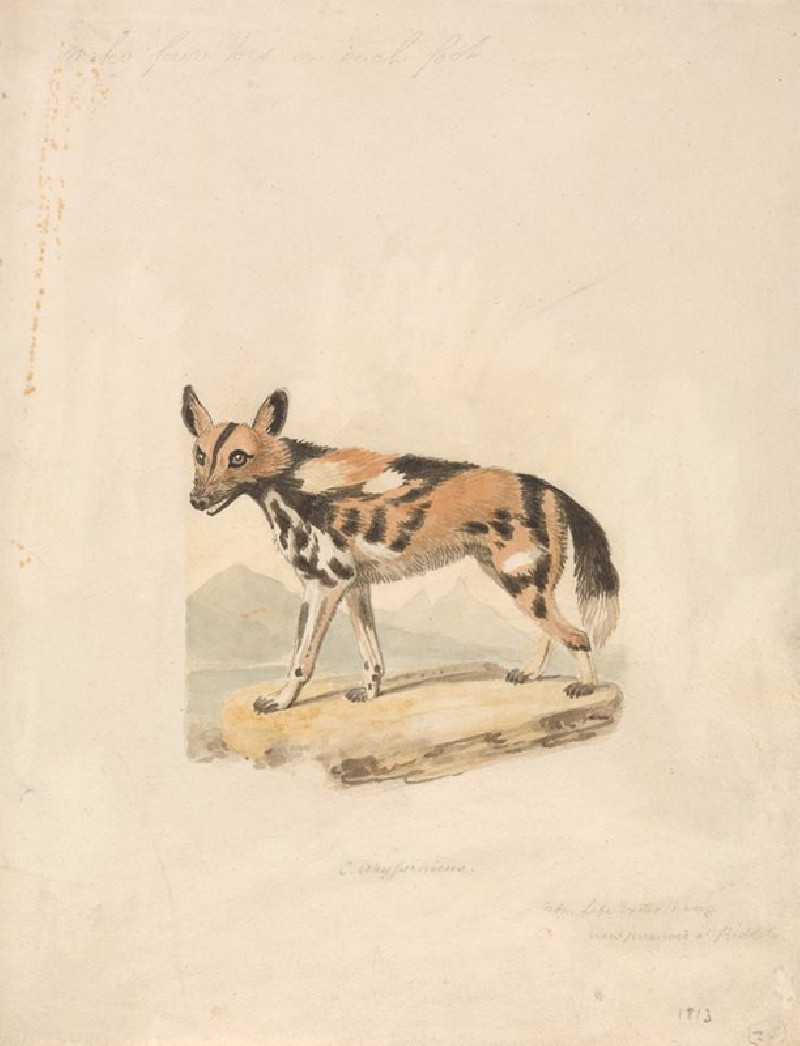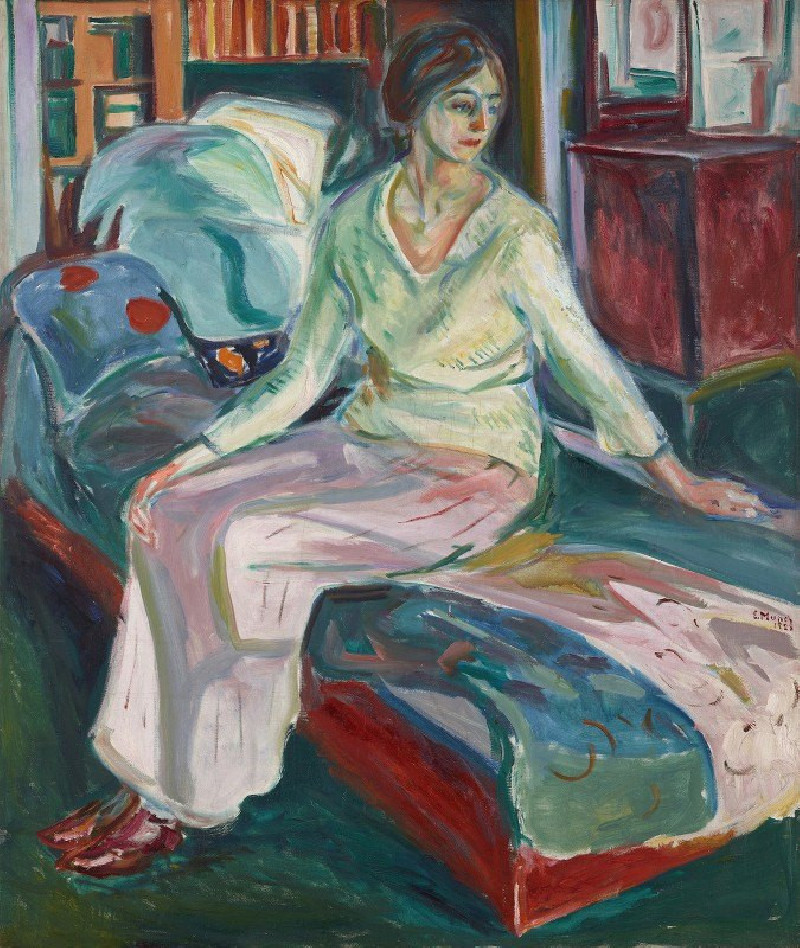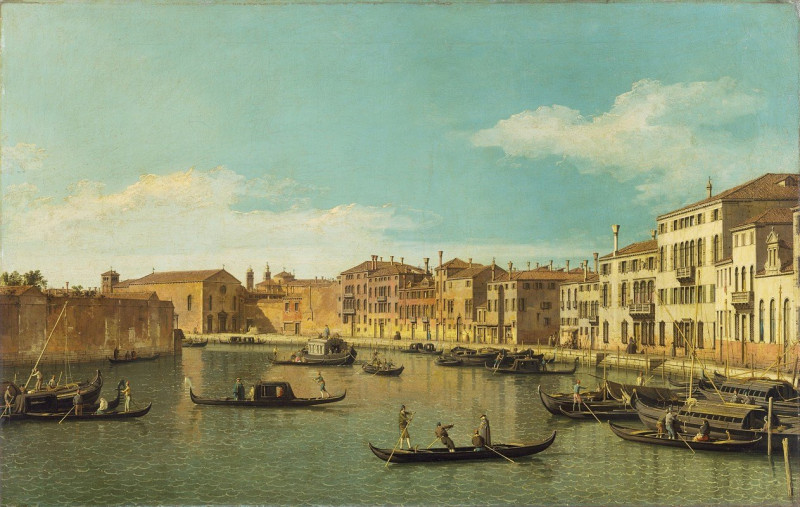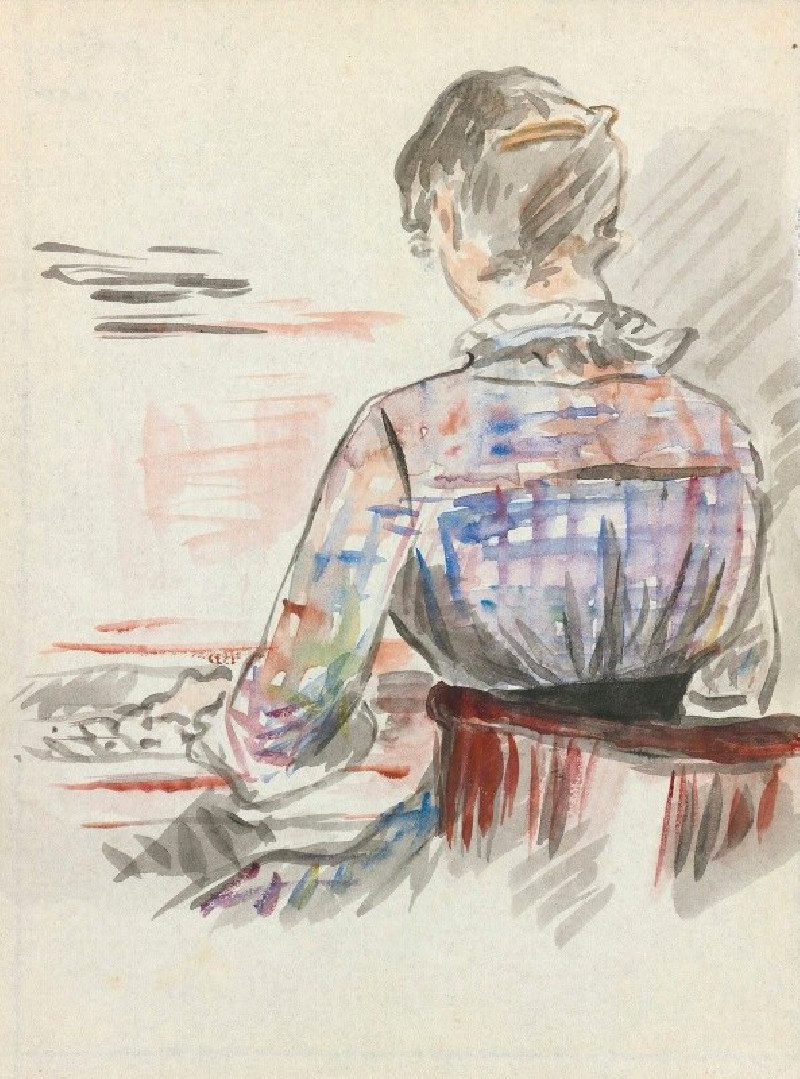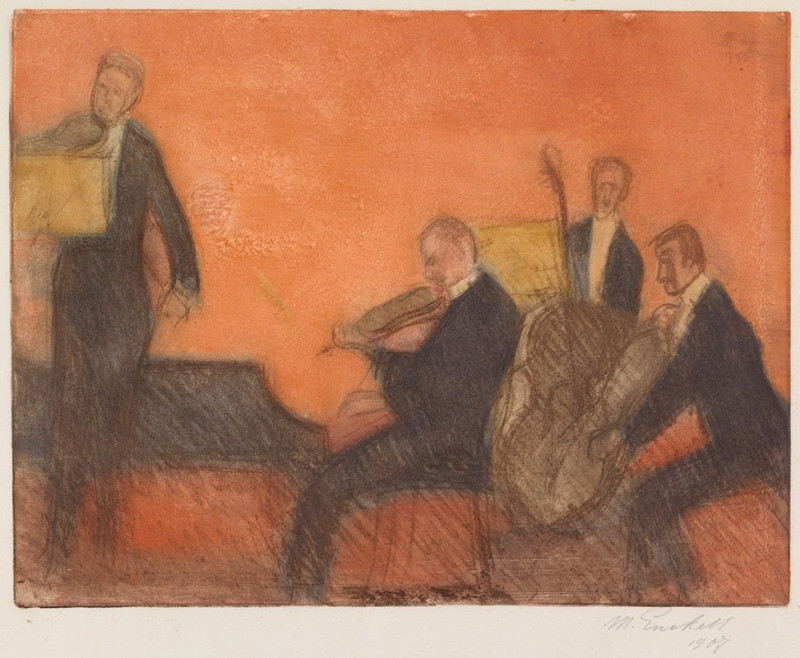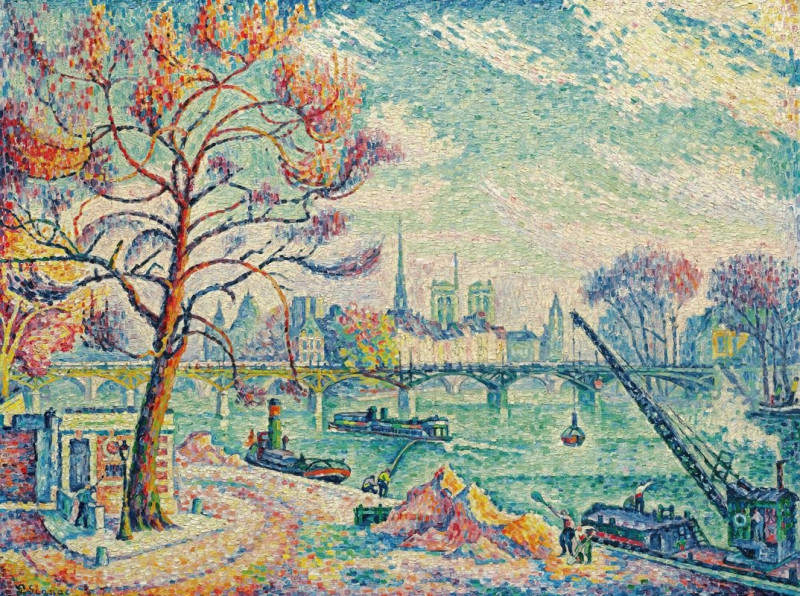The Variety Theatre In Paris, 1912,
Technique: Giclée quality print
Recommended by our customers
More about this artwork
"The Variety Theatre in Paris, 1912" by Magnus Enckell captures a lively scene inside a theater. The painting is filled with rich, vibrant colors and a sense of movement that conveys the buzzing energy of a night out at the theater.In the foreground, the audience is depicted with broad, expressive strokes of color. The figures are rendered in a somewhat abstract manner, where details are not finely outlined but suggested through contrasting colors and shapes. This style gives a sense of immediacy and the fleeting nature of the moment. People appear engaged and absorbed by the performance, their faces turned towards the stage, some blurred into the dim lighting of the theater environment.The stage itself is awash in a warm, golden light that contrasts with the cooler, darker tones of the audience area. This central focus of light draws the viewer's eye directly to the activity on the stage, where a performance is taking place. The contents of the stage performance are somewhat abstract and not distinctly detailed, allowing viewers to imagine the type of act being performed, be it drama, music, or dance.Above the stage, the structure of the theater itself is hinted at with ornamental details and draped curtains, emphasizing the grandeur and decorative style typical of early 20th-century Parisian theaters.Overall, Enckell's work uses color and form to evoke the atmosphere of a Paris theater in 1912, capturing both the elegance and the dynamic cultural life of the time.
Delivery
Returns
Magnus Enckell (1870-1925) was a Finnish painter and graphic artist who was born in Helsinki. He studied at the Ateneum School of Art and later at the Académie Julian in Paris. Enckell was greatly influenced by the Symbolist and Art Nouveau movements, and his work often featured moody and dreamlike landscapes and portraits. He was one of the leading figures of Finnish art in the early 20th century, and his work helped to shape the development of modernist art in Finland. He passed away in 1925 at the age of 55, leaving behind a legacy that continues to inspire artists to this day.

